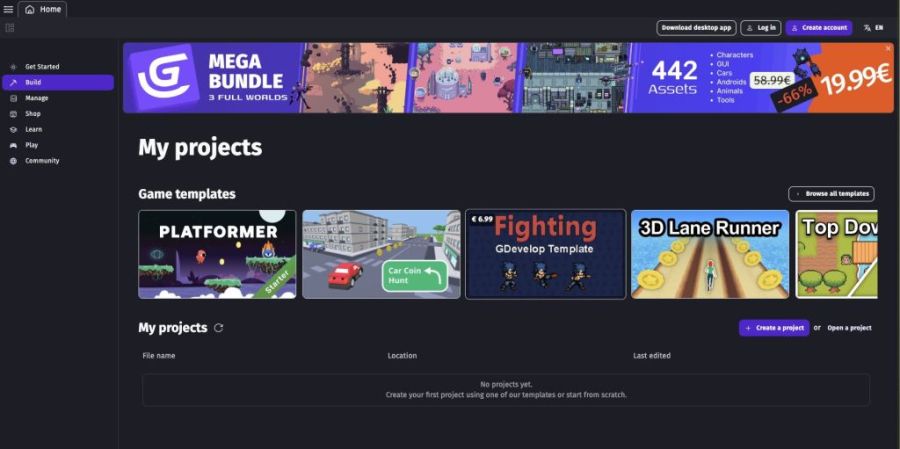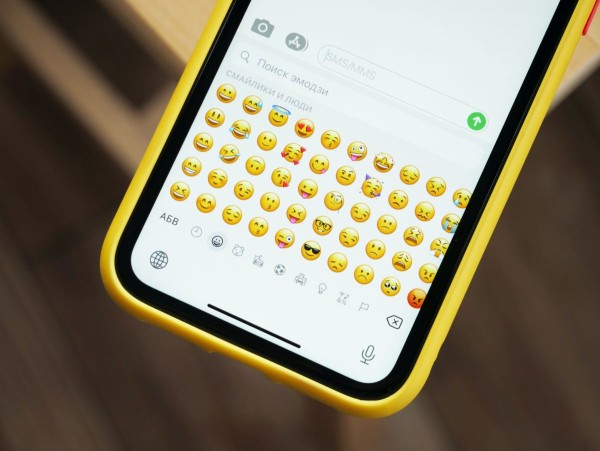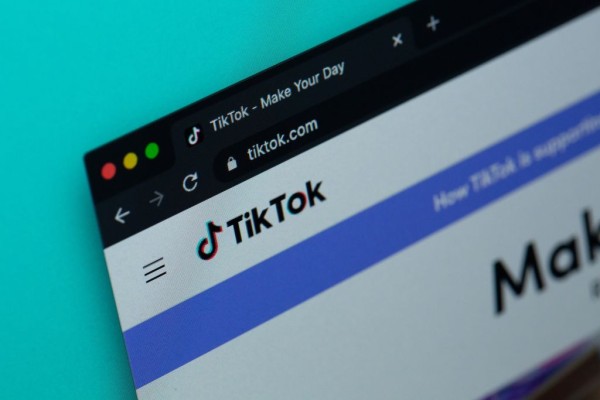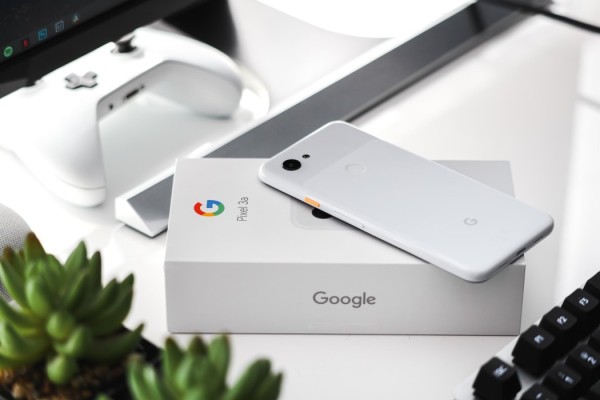In This Article
Looking to develop Android games with ease? In this guide, we’ll walk you through the process of creating captivating Android games using GDevelop, a tool suitable for all skill levels. Discover how this user-friendly, no-code game development platform can help you bring your game ideas to life.
GDevelop, conceived by Florian Rival in 2008, is an innovative, free, open-source game engine that simplifies game development for all, especially those without coding experience. This versatile engine supports the creation of detailed 2D and foundational 3D games on various platforms, including mobile devices, PCs, and web browsers. Beyond gaming, GDevelop is also important in education and is frequently used in schools and universities to teach game design and develop educational games.
Without further ado, let us go over how to make engaging Android games for this platform.
1. Getting Started With GDevelop
Starting your Android game development with GDevelop is as easy as it gets. Simply download the app from the Play Store to access the official version. For desktop users, the software is available on its official website and is compatible with multiple operating systems.
Then, create a free GDevelop account, which grants access to basic features and templates. This allows you to create and modify games with a limited number of events. Upgrade to a GDevelop Premium subscription, available directly within the app and through its site for more advanced capabilities. This upgrade expands your development potential with additional features for Android platforms.

2. Developing Your First Android Game
You can make many different kinds of Android games in GDevelop, anything you can think of literally. You can try platformers, where players jump and run through inventive levels, or create puzzle games that challenge players with logic and strategy. For RPG lovers, you can build worlds rich in story and character depth (our personal favorite).
In case you didn’t know, GDevelop also shines in providing tools for creating casino-themed games that are ideal for online casinos and demonstrate the platform’s versatility. Here, you can use GDevelop’s assets to design games with realistic slot machines or card gameplay, which allows you to bring the casino experience to mobile devices.

So, to design Android games with GDevelop, focus on these key aspects:
- Game conceptualization. Start by developing your game’s theme, characters, and environment. Utilize GDevelop’s templates and Asset Store for various visual and gameplay elements to bring your game ideas to life.
- Implementing gameplay mechanics. GDevelop’s Event System allows you to design complex game mechanics. This system replaces the need for coding with intuitive event-driven logic, enabling you to create simple and sophisticated gameplay dynamics.
- Mobile development capabilities. The GDevelop mobile app provides the same functionalities as the desktop version, enabling you to design games directly on your phone. How cool is that? This includes editing scenes, objects, and events and integrating JavaScript for more complex features.
- Leveraging open-source flexibility: GDevelop is an open-source platform That allows for deeper customization. Advanced users can modify the engine’s code, add new features, or tweak existing ones to suit their specific game design needs.
3. Testing and Exporting the Game
Before launching your Android game created in GDevelop, you should make sure it runs flawlessly. Should you encounter any problems with your app’s performance, verify that your Google Play Services are up to date and consider clearing the cache for better functionality.
- Test your game. Use GDevelop’s preview feature for in-environment testing. This step is essential to identify and fix bugs and ensure your game performs well on various devices.
- Export for Android. After thorough testing, export your game as an APK or Android App Bundle (AAB) directly from GDevelop. The APK is perfect for testing on your device, while the AAB is required for Google Play Store submissions. Transfer the file and modify security settings to install the APK on your Android phone.
Moreover, a standout feature of GDevelop is the ability to export your game’s APK, EXE, or HTML file directly from a mobile device. This means you can complete the entire build process on your phone. After that, you can release your work across various platforms like Steam, Google Play, and others. Keep in mind that GDevelop only offers limited daily exports, with subscription options for more frequent packaging.
Why Choose GDevelop?
Here’s why GDevelop stands out:
- Intuitive design tools and pre-programmed actions: An interface that’s user-friendly and flexible. Multitouch and sound effects? Included! Also, you can speed up development with ready-made behaviors.
- Feature-rich simplicity: Enjoy advanced features like pathfinding, physics, and multitouch support, all within an easy-to-use interface. Customize further with extensions or code with JavaScript – it’s your choice.
- Accessible knowledge: With an extensive wiki, start from scratch and learn as you go. Its game development made it approachable.
- Visual programming: Drag and drop to build your game. It’s as simple as pie – no coding skills needed. But, for the code fanatics, there’s always JavaScript.
- One-click exports and community support: Distribute your game everywhere – Android, web, desktop – without worrying about royalties. Tap into a vibrant community for help, tips, and collaboration. Share your progress, get feedback, and stay inspired.
GDevelop Alternatives
Here are some other good alternatives of GDevelop you can try.
- Buildbox: A drag-and-drop interface, ideal for simple mobile and PC games. Paid but affordable. (Beginners Friendly)
- Construct 3: Visual scripting, good for 2D platformers and puzzle games. It paid a reasonable price. (Beginners Friendly)
- GameMaker Studio 2: Robust 2D engine with flexible scripting, popular for indie games. Paid with subscription options. (For Experienced Developers)
- Unity: An industry-standard 3D engine capable of 2D games, with vast learning resources and asset libraries. Free personal plan, paid versions for advanced features. (For Experienced Developers)
- Unreal Engine: High-end 3D engine for AAA-quality graphics, demanding steeper learning curve. Free with royalty fees for commercial games. (For Expert Developers)
- CryEngine: Another powerful 3D engine with stunning visuals, popular for FPS and open-world games. Free for non-commercial use, paid for commercial projects. (For Expert Developers)
The Final Level
Alright, future game wizards, it’s time to wrap up this guide! Don’t just sit there dreaming about game worlds – create them! Remember, every great game starts with a “What if?” So, ask yourself: What if I start today? And hey, when you’re proudly watching players navigate the worlds you’ve crafted, remember this moment – this is where it all began.











